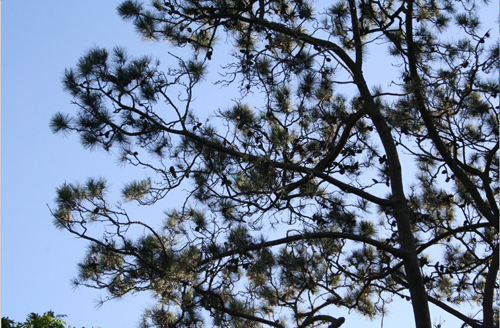
Only mentioned once in the Old Testament, ALVIN JOHNSON takes a look at the ‘oren’ or pine…
The oren is only mentioned once in the Old Testament. The reference is found in Isaiah where the NIV translates it as ‘pine’.
The context of the passage is of someone making an idol out of its wood: “He cut down cedars (erez) or perhaps took a cypress (tirzah) or oak (allon). He let it grow among the trees of the forest, or planted a oren (pine), and the rain made it grow. It is man’s fuel for burning; some of it he takes and warms himself, he kindles a fire and bakes bread. But he also fashions a god and worships it; he makes an idol and bows down to it. Half of the wood he burns in the fire; over it he prepares his meal, he roasts his meat and eats his fill. He also warms himself and says, ‘Ah! I am warm; I see the fire.’ From the rest he makes a god, his idol; he bows down to it and worships. He prays to it and says, ‘Save me; you are my god’. They know nothing, they understand nothing; their eyes are plastered over so they cannot see, and their minds closed so they cannot understand.” – Isaiah 44:14-18

The foliage of the Aleppo or Jerusalem pine. PICTURE: Alvin Johnson.
The word oren in modern Hebrew, is the ‘pine’, yet there has been the suggestion the oren in the Old Testament may have been the laurel tree (Lauris nobilis).
If the oren is the pine, then the Aleppo pine, also called the Jerusalem pine (Pinus halepensis), is the main contender. There are two other species of pine found in Israel today. They are the stone pine or umbrella pine (Pinus pinea) and the Turkish pine (Pinus brutia). However, the Turkish pine is not native to Palestine, having been introduced in the 1930s. There is also some doubt as to whether the stone pine was native to Palestine too. Although among those who believe it was, it is suggested that the Pinus pinea may have been the ‘tirzah’ (another Biblical tree). It is claimed that in the mid-19th century this tree was common on the coastal plain and even formed extensive forests there. There are some remaining groves of the stone pine at Yarka in Galilee and on Mount Carmel.
The Aleppo pine is a small to medium-size tree growing between 15 to 25 metres tall. It has a trunk diameter of around 60 centimetres when fully grown, but can grow larger. It is a tree which produces timber which is valued for its hardness. Some like Michael Zohary identified the Aleppo pine as the ‘ets shemen’ which is mentioned five times in the Old Testament. The Hebrew ets shemen literally means ‘oil tree’ and Zohary argues that the ‘ets shemen’ refers to the Aleppo pine because “the Jewish villages of North Kurdistan…have – probably since the Babylonia exile – preserved the name ets shemen for the pine”.
The stone or umbrella pine (Pinus pinea) is a slightly smaller pine, growing to between 12 to 30 metres in height. As the tree matures it develops an umbrella canopy, hence its name. When fully grown it can have a broad crown up to 60 metres in width. Its stem has a greyish-brown bark, its leaves appear in pairs and are between 10 to 15 centimetres long. It produces edible seed, which are colloquially known as ‘pignolia nuts’ in the markets of Israel.





